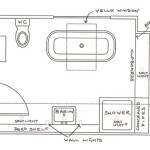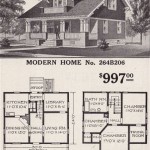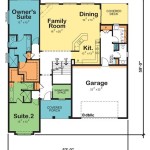How to Create a House Plan
Creating a house plan is a crucial step in the process of building your dream home. A well-designed floor plan lays the foundation for a functional, comfortable, and aesthetically pleasing living space. Here's a comprehensive guide to help you navigate the process of creating a house plan:
1. Define Your Needs and Preferences
Start by establishing your specific requirements for your home. Consider the number of bedrooms, bathrooms, and other essential spaces you need. Determine the desired style, size, and layout that best suits your lifestyle and preferences. Gather inspiration from magazines, websites, and home tours to refine your vision.
2. Choose a Plot and Orientation
The plot you choose will significantly influence the design of your home. Consider the size, shape, and slope of the land. The orientation of your home should maximize natural light, ventilation, and views while minimizing energy consumption.
3. Establish the Layout and Zoning
Plan the layout of your home by dividing it into functional zones: public areas (such as the living room, dining room, and kitchen), private areas (bedrooms and bathrooms), and service areas (garage, laundry, and storage). Ensure a logical flow between spaces and adequate circulation throughout the home.
4. Determine Room Sizes and Proportions
Establish the dimensions of each room based on its intended use and the size of your family. Consider the recommended minimum sizes for different rooms and provide ample space for furniture, appliances, and comfortable movement. The proportions of each room should be harmonious and create a pleasing visual effect.
5. Incorporate Architectural Features
Add architectural features to enhance the aesthetic appeal and functionality of your home. Consider elements such as bay windows, arched doorways, built-in shelves, and fireplaces to create visual interest and enhance the overall design.
6. Create a Detailed Plan
Develop a detailed floor plan that includes all the necessary information: room dimensions, door and window locations, wall types, and plumbing and electrical fixtures. This plan should accurately represent the overall layout and design of your home.
7. Consider Energy Efficiency
Incorporate energy-efficient principles into your house plan. Utilize natural light through large windows, design passive solar heating and cooling systems, and select energy-efficient appliances and building materials to minimize your environmental impact and reduce utility costs.
8. Seek Professional Assistance if Needed
If you lack the necessary design skills or require additional expertise, consider hiring an architect or a house designer. They can provide professional advice, create a custom plan tailored to your specific needs, and ensure that your home meets building codes and safety regulations.
Conclusion
Creating a house plan is an exciting and rewarding process that lays the foundation for your future home. By following these steps and embracing creativity, you can design a functional, comfortable, and visually appealing living space that meets your unique needs and aspirations.

Floor Plan Creator And Designer Free Easy App

House Plans How To Design Your Home Plan

Floor Plans Learn How To Design And Plan

How To Calculate House Plan Measurements Read Floor Estimate The Dimensions Of Your

Create Floor Plan

1 Bedroom Apartment House Plans

Floor Plan Design Tutorial

How To Make Measurements Home Plan Every People Want Know House Plans Floor Drawing

How To Make Modifications A House Plan

How Do I Build The Best Home In An Area Of 1500 Square Feet 30x50








